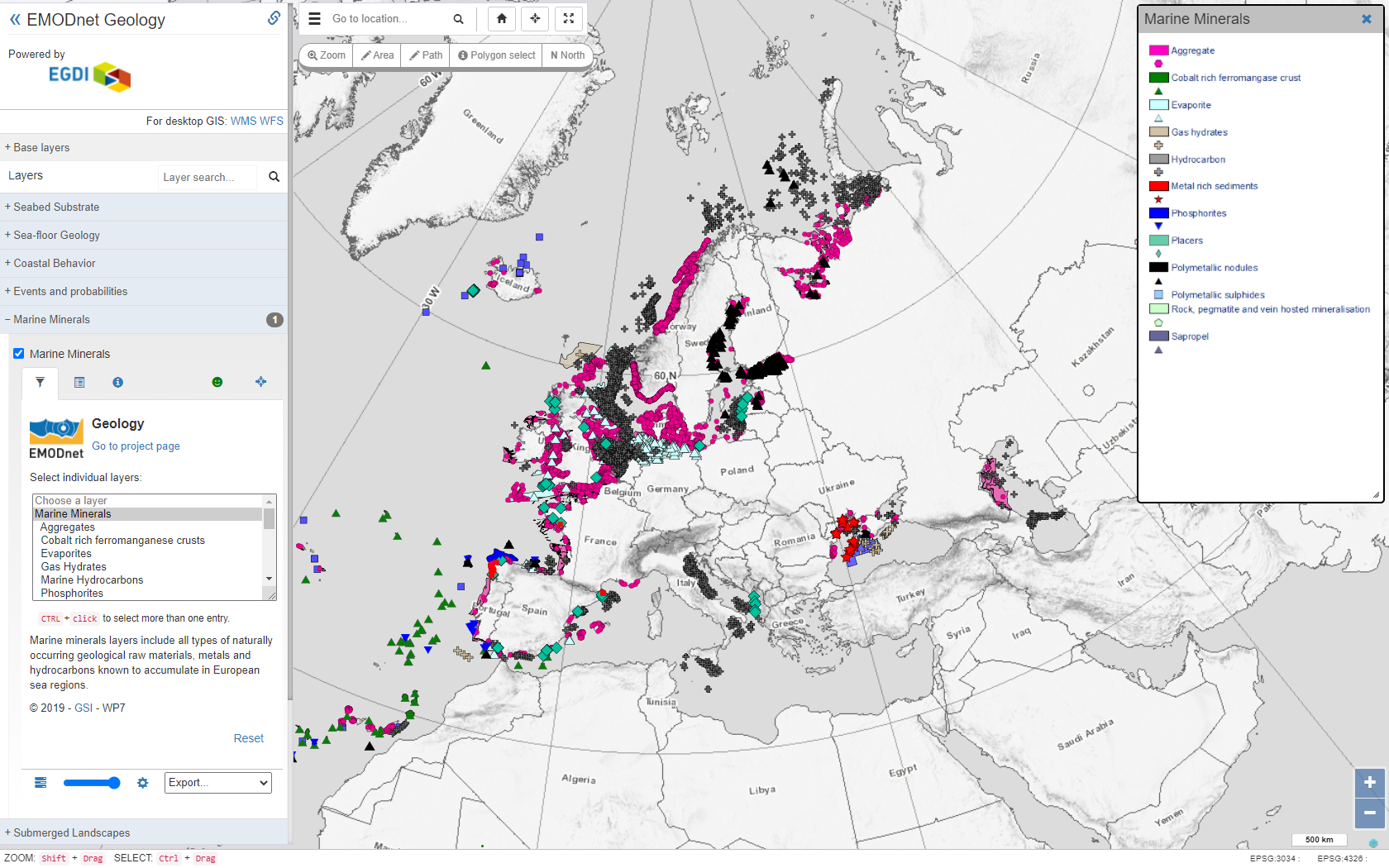The EMODnet Geology team responsible for the work on Minerals, led by Geological Survey Ireland, has released new datasets of recorded marine minerals known to accumulate in seas surrounding European waters. The different types of marine mineral mapped by EMODnet Geology vary widely in genesis, i.e. how they form. Included in these twelve types of minerals are: aggregates; hydrocarbons; gas hydrates; marine placers; phosphorites; evaporates; polymetallic sulphides; polymetallic nodules; cobalt rich ferromanganese crust; metal rich sediments; rock, pegmatite and vein hosted mineralisation; sapropel.
Information on the types of minerals has relevance to engineering and planning for those who draw policies on the designation of areas for protection as well as licencing for mineral extraction. Environmental and climate scientists who may be interested in the sea level rise and chemical interactions within our ocean can glean useful information from some of the mineral types listed. The importance of marine Critical Raw Materials (CRM) are not only essential for the production of a broad range of goods and services used in everyday life, but also for the development of emerging innovations linked to eco-efficient technologies.
In 2020 the EU Blue Economy Report prepared by the European Commission featured EMODnet Geology Marine Aggregates mapping highlighting the established sector of Marine non-living resources in relation to “other minerals”, a sub-sector which is expected to be on the rise. This rise is associated with the demand for resources such as sand and gravel, used for construction purposes and for producing concrete. Increasing demands for drinking and, in general, fresh water means that desalination is also expected to grow. Likewise, as coastal communities attempt to adapt to new pressures posed by climate change, dredging, beach nourishment and sand reclamation may intensify.
The data collation for EMODnet Geology IV saw marine mineral data submitted by 24 partners and published in pre-defined data schemas that report important information for each of the twelve mineral types. It is envisaged that under the next Phase of EMODnet Geology these datasets will continue to be updated as well as focus on the development of innovative product layers to include mineral resource potential and mineral sub-classification.
Media

Services
Visualize EMODnet Geology’s marine minerals layers
Integrate the Marine Minerals layers in your own desktop software using WMS and WFS
Related links
The EU blue economy report 2020
Blue sectors contribute to the recovery and pave way for EU Green Deal
Please note that EMODnet is in the process to provide a central access point to its data and data products through the Central Portal in the coming months. More information can be found here.
